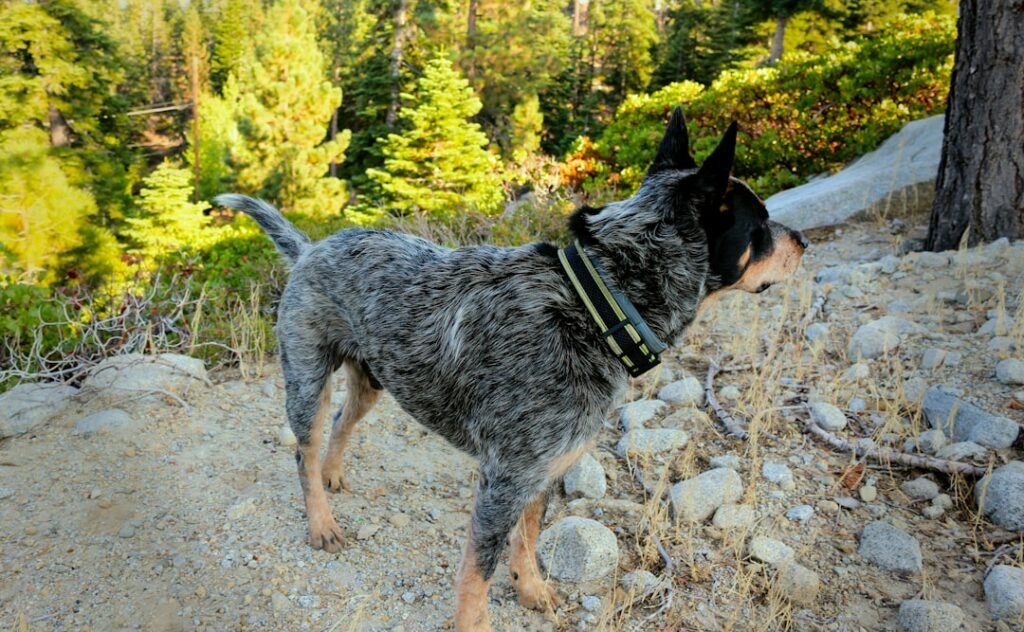Western astrology calls Taurus, Virgo, and Capricorn “earth signs” for a reason: they draw imagery from the ground beneath our feet. Yet the animals that shadow these signs do something more interesting than decorate horoscopes – they offer living metaphors for patience, precision, and endurance. In a world racing toward the next notification, these whisper slower truths about how strength forms and lasts. Scientists who study animal behavior, symbolism, and human cognition increasingly find that such metaphors are not fluff; they shape attention, memory, and even daily habits. The mystery isn’t whether the stars control us, but why particular creatures keep guiding our choices in repeatable, tangible ways.
The Hidden Clues

Look closely and you’ll see the same animals surfacing across cultures whenever people describe grounded lives. Bulls and bison show up where survival depends on land and weather; bees arrive in stories whenever work turns meticulous; mountain goats appear where the horizon tilts into cold stone and thin air. These aren’t random decorations but distilled lessons from environments that demanded certain human skills to thrive. The patterns feel ancient because they are, carrying practical knowledge long before textbooks existed. When we talk about earth signs today, we’re really talking about how humans learned to read the land through its most persuasive teachers – animals.
That recognition matters because metaphors act like mental shortcuts, guiding choices under pressure. When someone remembers the beaver while planning a project, they’re nudging their brain toward staged, water-smart engineering. When a team lead invokes the mountain goat before a tough quarter, the mind primes for steady footing and incremental gains. The animal becomes a cognitive railing on a steep staircase, quiet but stabilizing. In this way, don’t predict behavior; they nudge it into coherent form.
From Ancient Tools to Modern Science

Long before spreadsheets, communities tracked seasons and work through animal calendars carved on bone, painted on cave walls, or woven into festival days. Those early “databases” mapped when herds moved, when bees swarmed, and when fields needed turning. Over time, symbols condensed into zodiac shorthand, which traveled and morphed but kept the same backbone: animal cues that translate nature’s rhythms into human routines. Modern cognitive science adds a twist by showing that symbols stick when they’re vivid, social, and repeated, the exact properties of totems that live in stories and rituals. The result is a durable feedback loop between attention, memory, and action.
Ethology – the study of animal behavior – helps separate useful pattern from superstition. Beavers really do reengineer rivers; bees do coordinate complex labor; goats do conquer brutal inclines with improbable calm. When people adopt these animals as guides, they’re importing proven ecological strategies into personal decision-making. It’s not magic, just well-edited nature. The zodiac may be poetic, but the lessons are operational.
Taurus: The Bull, the Bison, and the Patient Engineer

Taurus is often cast as the bull, all muscle and momentum, but the deeper lesson is controlled force. Bulls don’t waste energy; they hold it, then commit. On open grasslands, bison drive that same idea at ecosystem scale, shaping prairies by grazing patches and moving on, a rhythm that keeps plant communities diverse and resilient. I once watched a herd lift dust like weather, then settle into methodical feeding – no hurry, no slack, just steady work. That pace translates into how Taurus types manage resources: build reserves, spend decisively, leave room for landscapes to recover.
There’s also the beaver, a less obvious Taurus totem that turns patience into architecture. By stacking wood with water in mind, the beaver creates wetlands that slow floods, filter sediments, and shelter a crowd of species. The takeaway for grounded builders is simple: shape your environment so it protects you back. Practical notes often follow: plan for high water, create buffers, and let systems self-correct. Strength here is not a sprint; it’s a dam built stick by stick.
Virgo: The Bee, the Owl, and the Precision of Small Things

Virgo’s power shows up in the details other people miss. The bee anchors that focus, turning nectar into patterned work that feeds a whole colony and pollinates landscapes far beyond the hive. What looks fussy at close range becomes expansive at scale, a quiet reminder that careful inputs can yield outsized outcomes. Then there’s the owl, a master of silent flight and pin-point hearing, teaching the craft of listening before acting. Virgo energy thrives on that combination: attentive labor and well-timed moves.
In labs and libraries, Virgo-style thinking appears as rigorous methods and clean documentation. Bees offer the perfect metaphor for iterative testing – repeat, refine, and communicate your findings clearly. Owls add the nocturnal note: do your best work when the world is quieter and distractions thin out. The spirit lesson isn’t to do more; it’s to do the right few things with disciplined grace. Precision becomes a kindness when it saves everyone time and confusion.
Capricorn: The Mountain Goat, the Ibex, and the Long Climb

Capricorn’s classic image is the sea-goat, a creature of water and rock, but on the ground the lesson belongs to mountain goats and ibex. These animals treat cliffs like sidewalks, using split hooves and soft pads to grip ledges that make human knees wobble. Progress looks slow from a distance, then suddenly it’s a summit. That’s the Capricorn pattern: map the route, keep three points of contact, and don’t announce the win until your shadow falls on the peak. Endurance, here, is the quiet twin of ambition.
Ibex are famous for scaling nearly vertical dams to reach mineral-rich salts, an image that rewrites what “impossible” means. The metaphor is engineering-strong: don’t fight the wall – use its microtexture. In careers and communities, that turns into strategies like building support structures, leaning into time-tested routines, and treating obstacles as surfaces to read rather than foes to attack. Each careful step compounds into altitude. Eventually, gravity does some of the bragging for you.
Why It Matters

Symbols are not substitutes for evidence, but they are superb tools for steering attention toward good evidence. Compared with personality tests or one-size-fits-all advice, animal totems offer modular guidance: choose the trait you need now and practice it in a concrete way. Traditional calendars taught this by matching tasks to seasons; modern life can revive it by matching tasks to totems. That agility matters when stress is high and decision fatigue sets in. It’s easier to remember “beaver the deadline” than a paragraph of project-management theory.
There’s also a social dimension that old methods captured and we sometimes forget. Shared animal stories build cohesion because everyone knows the shorthand. Teams rally around a goat when the path steepens; families recall the owl before rushing a choice; communities adopt the bee when collective effort is required. Compared with abstract pep talks, totemic cues are embodied and sticky. In a crowded information ecosystem, that stickiness is survival.
The Future Landscape

Expect the next few years to bring richer, evidence-based ways of working with these archetypes. Designers are already building bio-inspired tools that mirror beaver-style water management or bee-inspired logistics, and those ideas are trickling into personal productivity. Education platforms may soon pair learning modules with animal metaphors, giving students a tactile anchor for complex skills. Mindfulness and coaching programs can do the same, swapping vague mantras for animal-informed drills that train attention and resilience. The promise is not astrology as authority, but biology as a library of strategies.
Challenges remain, starting with cultural sensitivity and ecological honesty. If we borrow a totem, we owe the animal and the people who steward it respect, accuracy, and support. There’s also the danger of narrowing ourselves to a single creature when the landscape needs a fuller cast. The smart approach is seasonal and situational: bull when you must commit, bee when communication falters, goat when the path tilts mean. Think of it as a rotating toolkit rather than a fixed identity.
Conclusion

Pick one totem for the month and practice it in small, testable ways. If Taurus speaks to you, design a beaver move: set one boundary that protects your time like a dam protects a valley. If Virgo calls, run a bee drill: schedule a short daily window for precise, undistracted work and log what changes. If Capricorn resonates, take a goat step: choose a hard task and break it into ledges you can actually stand on. Then, rotate to another animal and notice what sticks.
Back the metaphor with the real creatures by supporting local habitat projects, pollinator gardens, or mountain conservation programs. Bring these stories into your teams and families, not as edicts but as shared reference points. Keep a tiny field notebook of animal lessons you spot on walks or documentaries; patterns will emerge. The earth signs aren’t instructions from the sky – they’re invitations from the ground. What’s the first step you’ll take?

Suhail Ahmed is a passionate digital professional and nature enthusiast with over 8 years of experience in content strategy, SEO, web development, and digital operations. Alongside his freelance journey, Suhail actively contributes to nature and wildlife platforms like Discover Wildlife, where he channels his curiosity for the planet into engaging, educational storytelling.
With a strong background in managing digital ecosystems — from ecommerce stores and WordPress websites to social media and automation — Suhail merges technical precision with creative insight. His content reflects a rare balance: SEO-friendly yet deeply human, data-informed yet emotionally resonant.
Driven by a love for discovery and storytelling, Suhail believes in using digital platforms to amplify causes that matter — especially those protecting Earth’s biodiversity and inspiring sustainable living. Whether he’s managing online projects or crafting wildlife content, his goal remains the same: to inform, inspire, and leave a positive digital footprint.




